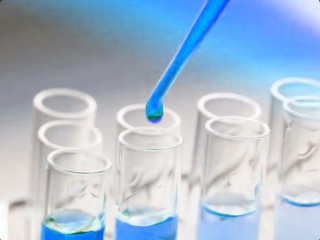Optical Rotation Angle of Common Materials

Polarimeter is a kind of instrument that is widely used in the pharmaceutical and food industries. A Polarimeter provides accurate and fast measurement capability in quality control and research. A polarimeter can measure the optical rotation angle form the polarization of light that passing through the substance, in order to read its purity, concentration and the characteristics of the substance. Finally, one can judge the quality of the substance accordingly. Optical Rotation Angle measurements is important for active pharmaceutical ingredients and also for checking the identity of chiral substances in incoming and outgoing goods laboratories. In food manufacturing, starch or sugar industries, a polarimeters can quickly test the concentration or purity of raw materials.
A.KRÜSS© Instrument Company is a long experienced polarimeter manufacturer in Germany, who provides the high-precision, reliable and durable measuring instruments since 1796. The polarimeter from A.KRÜSS© can be seen in almost all industries that require Optical Rotation testing. The following table lists the substances that is measured by the A.KRÜSS© P3000 and P8000 Polarimeter series over the years. This table only lists the most common applications. If the substance that you want to test is not listed in the the table, you are welcome to Contact ACTTR, and we will serve you with our professional consultants.
| Sample | Value α [°] | Measured at °C | λ [nm] |
|---|---|---|---|
| A | |||
| Aconitine | + 14° → + 19° | 20 °C | 589 nm |
| (L)-Ascorbic acid | + 22° | 20 °C | 589 nm |
| Atropine sulfate | - 0.5° → + 0.1° | 20 °C | 589 nm |
| B | |||
| (D)-2-Bromobutane | + 23.1° | 20 °C | 589 nm |
| (L)-2-Bromobutane | - 23.1° | 20 °C | 589 nm |
| C | |||
| Campher | + 54.4° | 20 °C | 589 nm |
| (D)-Carvone (Spearmint) | - 61° | 20 °C | 589 nm |
| (L)-Carvone (Caraway) | + 61° | 20 °C | 589 nm |
| (+)-Cavicularin | + 168.2° | 20 °C | 589 nm |
| Cholesterol | - 31.5° | 20 °C | 589 nm |
| D | |||
| Dextroamphetamine solution 4 % | + 20° → + 23.5° | 20 °C | 589 nm |
| Dextroamphetamine solution 8 % | + 19.5° → + 22° | 20 °C | 589 nm |
| Dexpanthenol | + 29° → + 32° | 20 °C | 589 nm |
| (D)-Lactic acid | - 2.6° | 20 °C | 589 nm |
| D (-) - Fructose | - 89.5° | 20 °C | 589 nm |
| D(+)-Glucose | + 52.5° | 20 °C | 589 nm |
| D (+) - Lactose | + 52.3° | 20 °C | 589 nm |
| D (+) - Limonene | + 125.6° | 20 °C | 589 nm |
| D(+)-Saccharose | - 66.5° | 20 °C | 589 nm |
| (D)-Tartaric acid | + 12.4° | 20 °C | 589 nm |
| F | |||
| Folic acid | + 18° → + 22° | 20 °C | 589 nm |
| G | |||
| Globoli Sacchari | + 66.3 → + 67° | 20 °C | 589 nm |
| H | |||
| Hydrocortisone | + 168° | 20 °C | 589 nm |
| Hydrocortisone acetate | + 167° | 20 °C | 589 nm |
| I | |||
| Inverted sugar | - 19.7° | 20 °C | 589 nm |
| L | |||
| Lactose | + 52.3° | 20 °C | 589 nm |
| Levocarnitine | - 32° → - 29° | 20 °C | 589 nm |
| (L)-Lactic acid | + 2.6° | 20 °C | 589 nm |
| (L)-Tartaric acid | - 12.4° | 20 °C | 589 nm |
| M | |||
| Mint oil | - 34° → - 16° | 20 °C | 589 nm |
| O | |||
| Octyldodecanol | - 0.1° → + 0.1° | 20 °C | 589 nm |
| Orange peel oil | + 95° | 20 °C | 589 nm |
| P | |||
| Paclitaxel (Taxol) | - 49° | 20 °C | 589 nm |
| Penicillin V | + 223° | 20 °C | 589 nm |
| (-)-Phenylephrine hydrochloride | - 47° → - 43° | 20 °C | 589 nm |
| S | |||
| D(+)-Saccharose | - 66.5° | 20 °C | 589 nm |
| Sorbitol solution | + 1.5° → + 3.5° | 20 °C | 589 nm |
| Sorbitol | + 4° → + 7° | 20 °C | 589 nm |
| V | |||
| Vitamin D (in Acetone) | + 82.6° | 20 °C | 589 nm |
| Vitamin D (in Chloroform) | + 52° | 20 °C | 589 nm |
| Vitamin D (in Ethanol) | + 102.5° | 20 °C | 589 nm |


